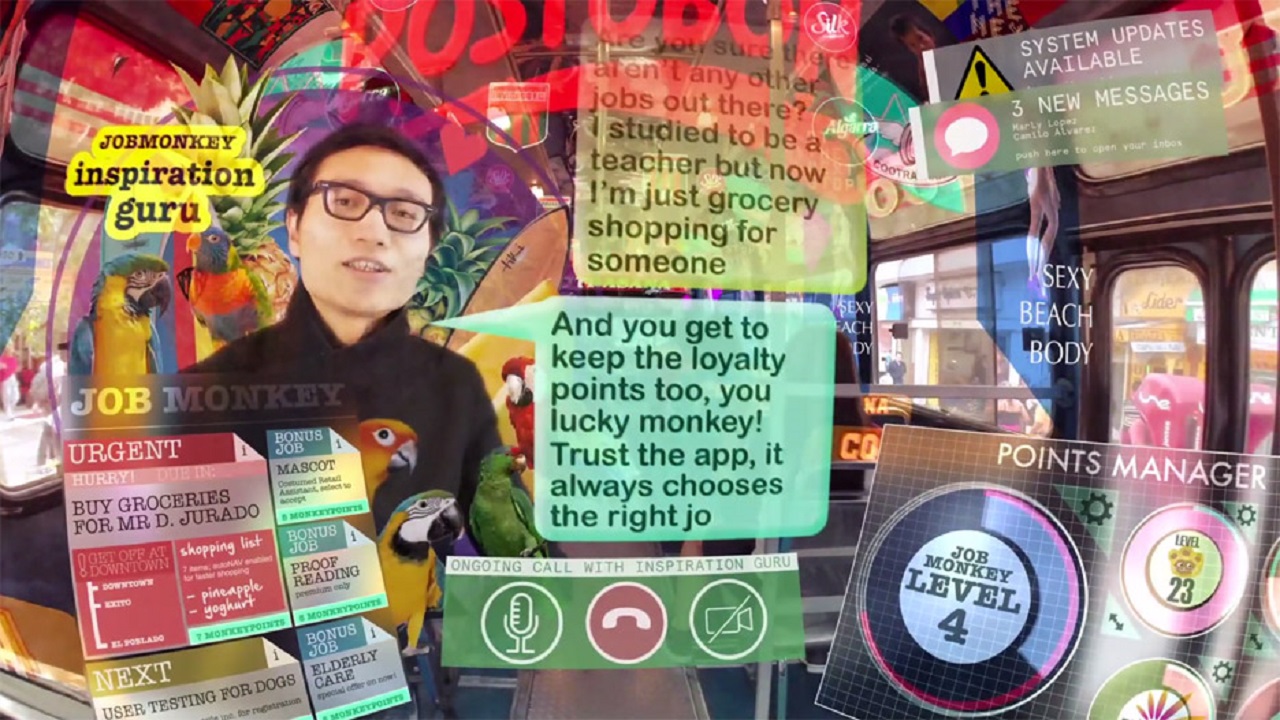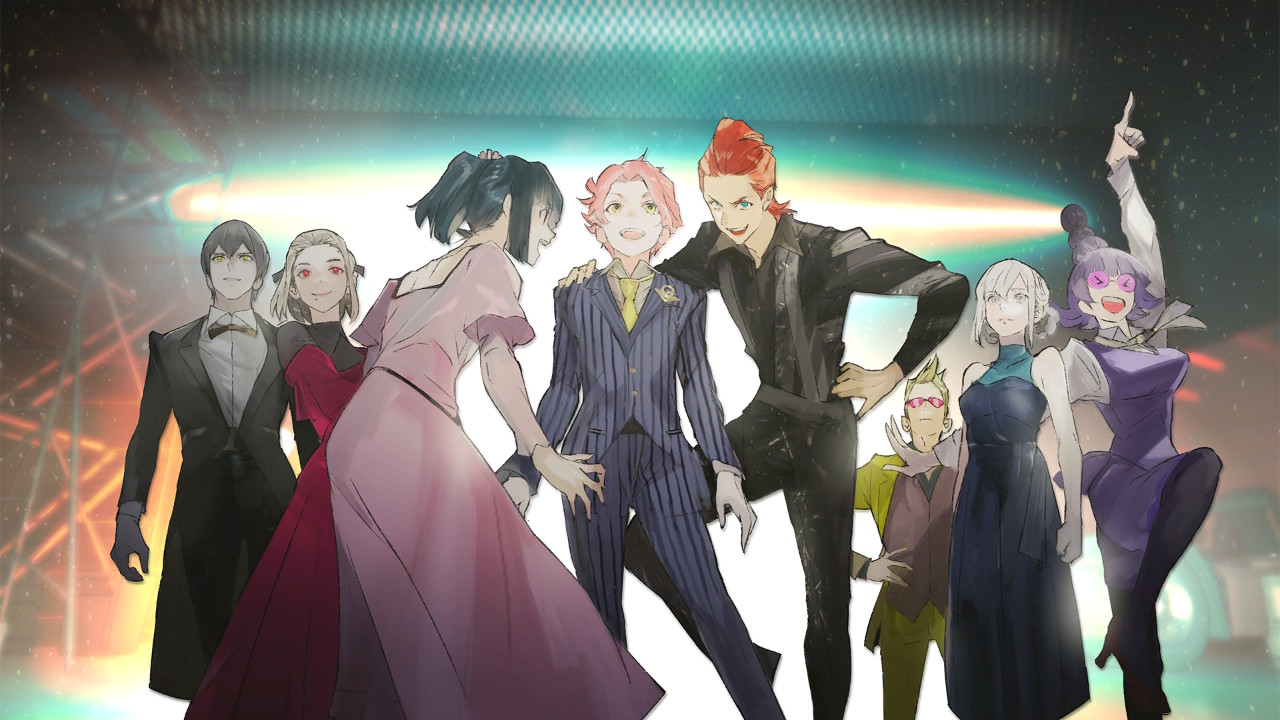Artists are forever predicting the future. Sometimes the predictions are merely a testing idea that doesn’t play out. Sometimes they nail it. We’re about to talk about an example of artists totally nailing it.
Overnight (for us here in Australia) Apple revealed the Vision Pro; a new high-end set of AR goggles. And while the usual… tech immersed… media and tech sycophants has been going gaga for it, all I saw was the realisation of a reality that artists warned us about years ago.
The best way to express what I saw was to get you to watch two videos back-to-back. First, watch the Apple Vision Pro presentation. You’ll see people put on these luxuriously expensive googles and immediately have reality superimposed with digital media and content. The idea being that with these goggles your experience of the world will be enhanced by having digital media enhance everything about it:
Now watch Hyper-Reality. A short film that, seven years ago, predicted exactly what the Vision Pro brings to us, and then makes the point that by drowning us with digital media and “painting over” reality, we are removed from society in such a way that it’s actually dystopic and anti-human:
It is almost shocking how similar Apple’s presentation is to the Hyper-Reality film. It’s like Tim Cook and his team saw it, somehow missed the message of it completely (or, being smart people, realised the message but also saw an excuse to sell $3,500 goggles), and decided to actually bring it to fruition.
I myself have written multiple features on this topic. In 2016 I wrote a piece on the social, cultural, and moral implications of augmented reality. In 2020 I wrote a feature about how several video games, including Death Stranding and The Caligula Effect, were asking hard questions about our growing ability to construct reality.
Admittedly at the time I was both jokey in tone and personally intrigued by the premise and promise of mixing the digital and the real. I was also naive to think that the companies working on this technology were utopian in their vision.
I’m now totally convinced that they are anything but. Tech companies are, in fact, precisely what the entire cyberpunk genre warned us about. Their irresponsible, unthinking, and utterly unethical laissez-faire approach to technology innovation is rapidly leading humanity down some really dark pathways.
And, rather than stop and question any of this, the media and the public end up manufacturing consent for it all. Wowwed by impressive presentations and excited for innovation at any cost, far (far) too few of us are stopping to consider whether any of this is actually good for us.
Weapons technology, hyper-realistic war games that the US military uses as a recruitment tool, AR technology, AI “art” replacing human creativity – there are so many potential “Skynet singularities” out there that, once we cross a threshold that we’re far too close to, we unleash something that fundamentally and irrecoverably undermines the existence of humanity. It might not be AI deciding to launch the nuclear bombs and start sending robots back in time to eliminate resistance leaders (though frankly don’t count that out. Silicon Valley would consider such time travel the ultimate in “efficiency”). But there are more subtle endings than that that are still, firmly, endings.
Several years ago, I went to an art exhibition by one of Japan’s great modern artists – Hiroshi Sugimoto. It was called The Lost Human Genetic Archive, and in it, he envisioned a few dozen apocalypse scenarios for humanity. Ways that our population will end. Some were the obvious – a meteor doing a dinosaurs 2.0 to us, or climate change.
Others were more subtle. Each scenario was demonstrated with a small text description of what it was and why it ended us. Here’s one that is intensely relevant to Apple’s announcement overnight:
“The Escapist
Today the world died. Or maybe yesterday. It all began when I went to a Hatsune Miku 3-D (sic) concert as a kid. I couldn’t tell virtual from real. After a childhood immersed in gaming and anime videos, imaginary stuff is more real to me than actual things. To most young kids, reality’s the fantasy. It’s like home grown Zen and everybody’s already reached satori. But enlightenment was a dead end. Folks who spend their whole life dreaming couldn’t be bothered to make babies, so the human race just petered our. Game over.”
This is why we need more people doing arts courses and getting arts degrees. STEM is great at filling R & D teams within Apple, Google, Microsoft and others with the kind of uncritical experts that create headsets like the Vision Pro. We need more people that actually question these things. Instead, we’re producing fewer of them than ever.
The few artists and greatly diminished art culture that we have is the one area that actually dares to question all this innovation. And, as you can see about, they’re absolutely nailing the analysis and insights. No wonder Silicon Valley, the corporations that benefit from the innovation, and the governments that both tech and enterprise buy are working collaboratively to undermine the arts and financially and socially destroy artists.
The Apple Vision Pro might, itself, not be an apocalypse scenario. Frankly it’s so ridiculously expensive that I doubt many people will bother with it at all. It is, however, another step that we’re taking. Too many of us think that this is a yellow brick road we’re on to grand adventure and having our greatest wishes fulfilled.
It’s not. It’s the other road. We’re not going to like where that takes us.













I am all for more people getting art degrees, but it’s not even just in the arts, it’s the humanities in general. After all, art history is inseparable from the rest of history and a lot of artworks explore the interrelationships and subjectivity that are the object of study of sociology and psychology.
The rise of the tech bros was accompanied by a dismissal of anything not Stem.
You would think that if they liked Stem so much, they would at least respect the social sciences, which includes a) the name science for a reason and b) philosophy – which includes the reasoning that justifies the scientific method used by Stem. But no, tech bros are associated with anti-intelectual stances, it’s all about the money in the end.
AR could be great, I guess, but these are just ways to turn reality itself into a product they can sell back to you. It cheapens, depreciate, the real.
Ah, sorry, that’s possibly a regional misunderstanding. In Australia when we refer to an “art degree” we do mean something from the arts and humanities. It’s an Aussie shortening of the term. You are right that it’s coursework from the arts and humanities that encourages the critical thought our society so desperately needs.
That’s actually a quite beautiful mingling of words/professions, as I think they are both interlinked in a very special way (I see teaching as an art for example).
That “mindfulness-app” really broke me. If you need constant audio-visual stimuli during meditation, you’re not doing meditation.
Yes using technology when 99% of the “mindfulness” advice these days is “get away from technology” seemed rather counter-intuitive to me as well.
I’m not sure if you’re talking about a specific mindfulness app but if you just mean the concept of a guided meditation app in general then I disagree. I’ve done plenty of guided meditations in the real world (no tech involved) with similar levels of audio to those in the apps. It’s just a different form of meditation to the totally silent one that (I assume) Buddhist monks and the like do. Plenty of studies have shown the benefits of meditation in all forms, including ones with stimuli. And also, meditation is a skill, and to get the most out of it you do in fact need to learn the things that guided meditations teach you, even if you then go on to do unguided ones. There are other ways to learn of course (reading books on it for example) but I’d wager that’s slower going for most people.
Yes, I see that the app could be well designed for these kind of experiences. I actually just had a conversation with my brother about these guided-meditation settings and I learned a thing or two about them. But still, it strikes me as very odd to have technology so closely intertwined with an experience that (at least in my view) should be “analogue” as much as possible.
PS: I really struggle with the semantics here, but I hope you get my point 😉
Ya know, we haven’t made books illegal (yet) but Fahrenheit 451 is looking more and more like a standard realist novel with every passing day.
Granted, as much as I love Bradbury, he was a little too far on the other extreme of the “Technology Savior/Technology Demon” spectrum, but there’s real wisdom in his writing. Wisdom and foresight. Just look at this fucking thing!
Gotta admit that sometimes I feel trapped in an endless cycle of being “anti-innovation” because I have so much to be critical of with what Silicon Valley does…
But then I realise that if Silicon Valley focused on technology that benefitted humanity, rather than exploited it, I’d be fine with the innovation. So yeah, I feel very aligned with Bradbury’s position myself these days.
After having found this nice article by chance (I’ve never been to this website before), I’d like to add one more thing:
Does anybody still remember the commercial with which Apple announced the Macintosh computer in 1984? It is a reference to the George Orwell novel of the same name, and in it a brave person smashes a giant screen to free people from the zombies they have become in an obviously dystopian world. You can see the whole thing here: https://www.youtube.com/watch?v=VtvjbmoDx-I
Now, exactly 40 years later, in 2024, the very same company wants to sell you a product that gets between you and the real world by means of two screens that you are supposed to strap to your head as often as possible. If it weren’t so sad, it would actually be quite funny: Apple and similar big tech companies have long become the creators of the dystopian visions they once claimed they’d save us from.
I’m glad you found us and found this article to be interesting! Hopefully we can continue to interest you!
I do remember that ad, and yeah, it hasn’t been lost on me that Silicon Valley went from being a place that was genuinely doing good for humanity (while also making money) to the dystopian nightmare it is today.
The question is whether there is anything that can save us now.
Art. That’s what can save us. I’m not saying it will, I don’t have a crystal-ball, but it can save us, at least I’d like to think so.